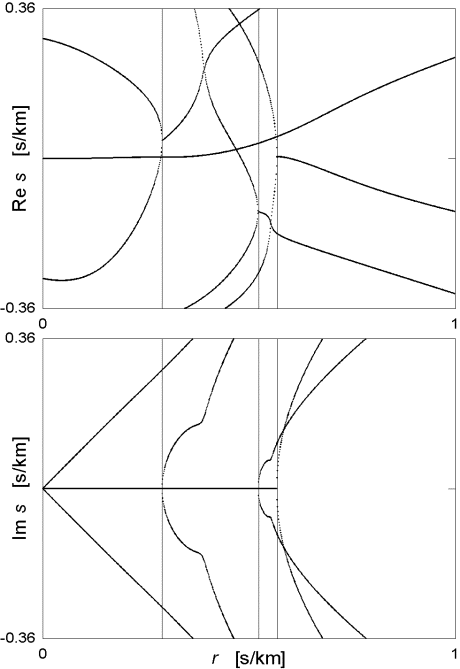
The real and the imaginary part of the slowness s for bismuth germanium oxide (Euler angles: 24, 70, 10 degrees). The three vertical lines mark the cutoff points.

The function Z(r) for bismuth germanium oxide (Euler angles: 24, 70, 10 degrees). The three vertical lines mark the cutoff points.
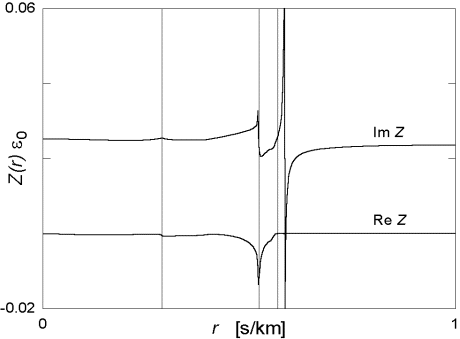
The function Z(r) (exact: solid curve, approximated: dashed curve) for lithium niobate (Euler angles: 0, 90, 90 degrees).
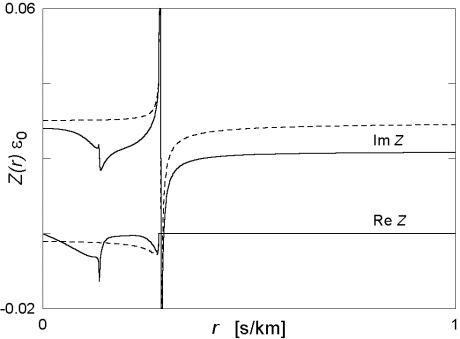
The function Z(r) (exact: solid curve, approximated: dashed curve) for quartz (Euler angles: 0, 90, 0 degrees).
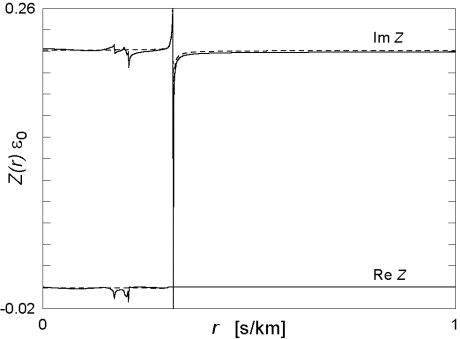
The function Z(r) (exact: solid curve, approximated: dashed curve) for bismuth germanium oxide (Euler angles: 0, 0, 45 degrees). The vertical line marks the cutoff point of bulk waves.
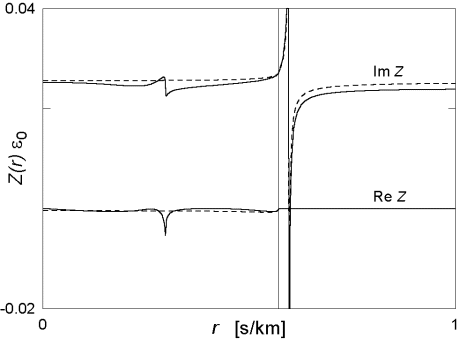
The real part of the function Z(r) (exact: solid curve, approximated: dashed curve) for bismuth germanium oxide (Euler angles: 0, 0, 45 degrees) in the neighborhood of the cutoff point of bulk waves. The vertical line marks this cutoff point.
